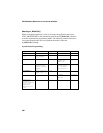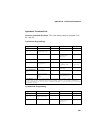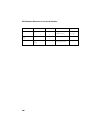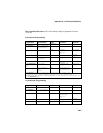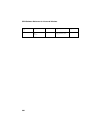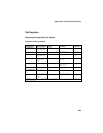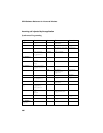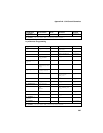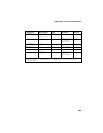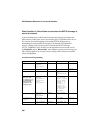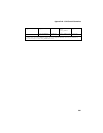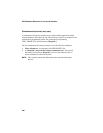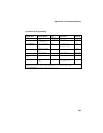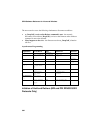
ISDN Software Reference for Linux and Windows
388
Glare Condition 1: Call collision occurs after the SETUP message is
sent to the network
A glare condition occurs when both an incoming and outgoing call request the
same time slot. When glare occurs, the incoming call is assigned the time slot. In
this scenario, the firmware detects an incoming SETUP message after transmitting
the outgoing SETUP message to the network. In this case, the firmware contains a
call reference number for both the incoming and outgoing calls. Therefore, the
application must issue cc_DropCall() and cc_ReleaseCall() to release the
outgoing call prior to processing the incoming call. This scenario applies to an
exclusive service setting with a firmware-controlled release configuration.
Asynchronous Programming
Application Device Driver State Firmware Network
cc_MakeCall()--> Host CRN # 1
assigned
Call_Outgoing
-->
NULL
Firmware CRN #1
is assigned
CALL_OUTGOING
-->
Set up
-->
Set_Up
<--
*B channel cut-
thru
CALL_PROCEEDING
-->
Proceeding
-->
Host CRN # 2
assigned
CCEV_OFFERED
<--
OFFERED Firmware CRN #2
is assigned
CALL_INCOMING
<--
cc_AcceptCall()
(option)
-->
Call_Alert
-->
CALL_ALERT
-->
Alerting
-->
CCEV_ACCEPTCALL
<--
ACCEPTED CALL_ALERT_ACK
<--
cc_AnswerCall()
-->
Call_Connect
-->
*B channel cut-
thru
CALL_CONNECT
-->
Connect
-->
CCEV_ANSWERCALL
<--
CONNECTED CALL_CONNECT_AC
K
<--
Conn_ACK
<--
CCEV_DISCONNECTED
<--
**DISCONNECT
ED
CALL_REJECTION
on CRN # 1
<--
Rel_Comp
<--



